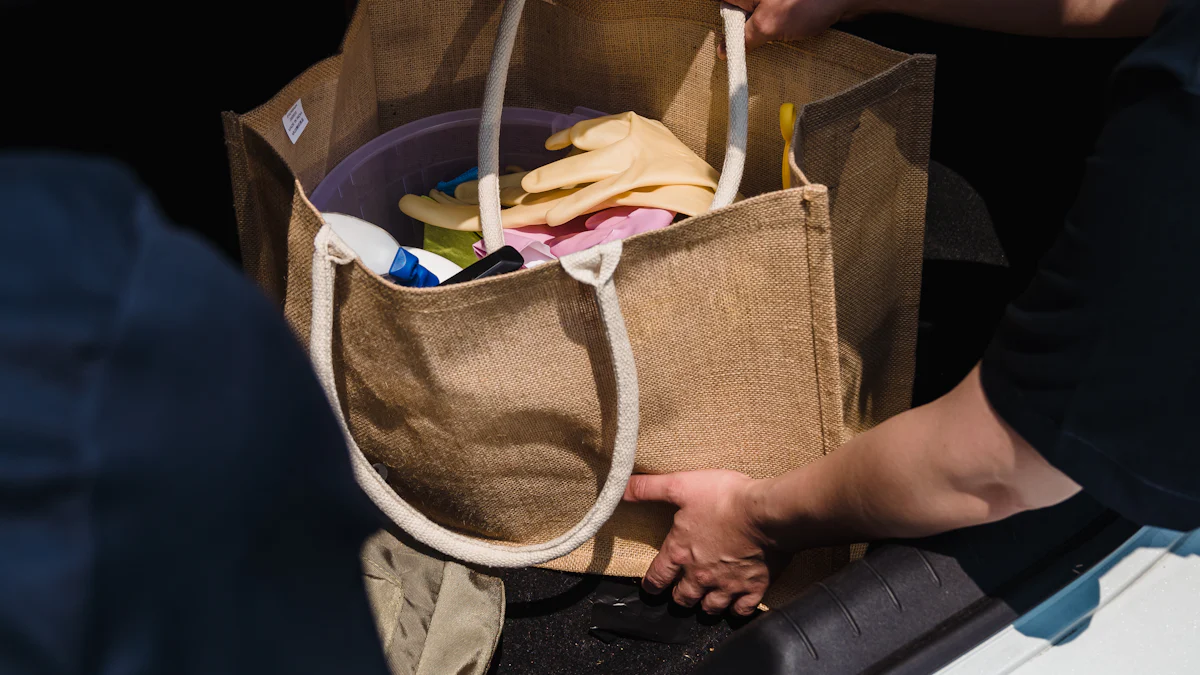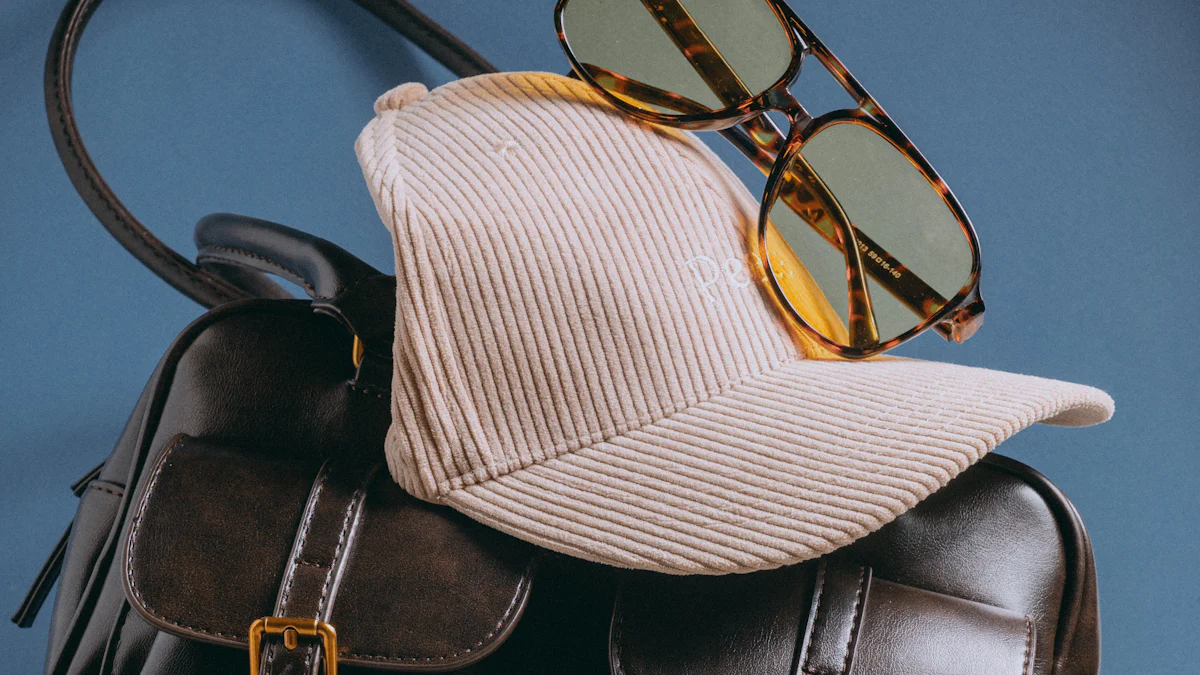When sourcing from a Southeast Asia bag factory, preparation is key. I always start by defining my needs, whether for cosmetic bags or storage bags. Factories here, like the Southeast Asian bag factory: TianHou Bag, offer extensive customization. Communication matters too. English proficiency helps, but cultural differences require clear, detailed instructions.
Key Takeaways
- Clearly explain what kind of bag you need. Include the type, size, materials, and who will use it. This avoids mistakes and helps the factory make the right product.
- Learn about what each Southeast Asian country does best. Knowing their skills helps you pick the right factory for your needs.
- Ask for samples before ordering a lot of bags. This lets you check the quality and fix problems before production starts.
Research and Preparation
Define Your Custom Bag Requirements
I always start by defining exactly what I need. This step saves time and avoids confusion later. I list the bag type, size, materials, and features. For example, if I want a travel bag, I specify dimensions, compartments, and material preferences like canvas or leather. I also think about the target audience. A cosmetic bag for professionals might need a sleek design, while a kids’ backpack could use vibrant colors and durable fabrics. Clear requirements help manufacturers like a Southeast Asia bag factory deliver the right product.
Set a Realistic Budget for Manufacturing
Budgeting is critical. I break down costs into materials, labor, and overheads. Materials like leather or high-quality zippers can increase costs, but they improve durability. Labor costs vary depending on skill levels. Overheads, such as factory utilities and maintenance, also add up. Here’s a breakdown I often use:
| Cost Component | Description |
|---|---|
| Materials | Includes fabrics, zippers, and hardware. Quality impacts pricing. |
| Labor | Covers wages and training. Skilled labor costs more. |
| Overheads | Includes rent, utilities, and maintenance. |
To save money, I negotiate bulk purchases and encourage efficient production techniques. Technology integration also helps reduce long-term costs.
Understand the Southeast Asia Bag Factory Landscape
Southeast Asia offers diverse manufacturing options. Each country has unique strengths. Vietnam excels in textiles with competitive labor costs. Thailand has strong infrastructure for automotive and electronics. Indonesia provides abundant natural resources but faces infrastructure challenges. Here’s a quick comparison:
| Country | Key Industries | Advantages | Considerations |
|---|---|---|---|
| Vietnam | Textiles, garments, electronics, furniture | Competitive labor costs, strong government support | Navigating local regulations, building relationships |
| Thailand | Automotive, electronics, food processing | Well-established automotive sector, strong infrastructure | Cultural nuances in business practices |
| Indonesia | Textiles, footwear, furniture | Large labor force, abundant natural resources | Infrastructure challenges, regional disparities |
I research each country’s strengths to find the best fit for my needs. This preparation ensures I choose the right Southeast Asia bag factory for my project.
Finding Manufacturers

Use Online Platforms to Discover Manufacturers
I often start my search for manufacturers online. Platforms like Alibaba, Global Sources, and Panjiva make this process straightforward. These B2B directories categorize manufacturers by product type, minimum order quantities, and certifications. I find this especially helpful when narrowing down options for a specific bag style or material. Trade associations, such as the ASEAN Federation of Textile Industries (AFTEX), also provide valuable resources. They connect me with reliable suppliers and help me source raw materials efficiently.
Online platforms save time and offer transparency. I can review factory profiles, read customer reviews, and even verify certifications. This step ensures I only contact manufacturers that meet my requirements.
Attend Trade Shows in Southeast Asia
Trade shows are another excellent way to find manufacturers. Events like the Vietnam International Trade Fair or the Bangkok International Gift Fair allow me to meet suppliers face-to-face. These shows provide networking opportunities and insights into local market trends. I’ve discovered innovative bag designs and materials at these events that I wouldn’t have found online.
I also value the chance to assess the quality of products in person. Southeast Asia’s skilled workforce often showcases their craftsmanship at these events. This firsthand experience helps me make informed decisions about which Southeast Asia bag factory to partner with.
Leverage Local Directories and Sourcing Agents
Local directories and sourcing agents simplify the search process. Directories list manufacturers by region and industry, making it easy to find factories specializing in bags. Sourcing agents, on the other hand, offer personalized assistance. They help me navigate language barriers and cultural differences.
When I work with a sourcing agent, I gain access to their network of trusted suppliers. This reduces the risk of fraud or non-compliance. Agents also handle negotiations and quality checks, saving me time and effort. Combining these resources ensures I find the right manufacturer for my needs.
Evaluating Manufacturers
Assess Factory Capabilities and Experience
When I evaluate a factory, I focus on its capabilities and experience. I ask about the types of bags they specialize in and the materials they commonly use. A factory with experience in producing travel bags may not excel at manufacturing eco-friendly totes. I also check their production capacity. This ensures they can handle my order volume without delays.
I often request a portfolio of past projects. This gives me a clear idea of their craftsmanship and attention to detail. Visiting the factory in person, if possible, helps me assess their equipment and workforce. A well-equipped Southeast Asia bag factory with skilled workers usually delivers better results.
Verify Certifications and Compliance Standards
Certifications are essential for ensuring quality and compliance. I always look for these key certifications:
- ISO 9001 for quality management.
- ISO 14001 for environmental practices.
- OEKO-TEX Standard 100 to confirm materials are free from harmful substances.
- BSCI Certification for ethical and social standards.
- GOTS Certification for organic textiles.
These certifications reassure me that the factory meets international standards. For example, ISO 9001 guarantees consistent quality, while BSCI reflects ethical sourcing practices. I also check for region-specific compliance, like REACH for Europe or CPSIA for the U.S.
Evaluate Communication and Responsiveness
Clear communication is vital. I test this by observing how quickly the factory responds to my inquiries. A responsive factory shows professionalism and reliability. I also evaluate how well they understand my requirements. Miscommunication can lead to costly mistakes.
I prefer factories that assign a dedicated point of contact. This simplifies communication and ensures accountability. Regular updates during production help me stay informed and address issues promptly.
Negotiating and Sampling

Negotiate Pricing and Minimum Order Quantities (MOQs)
When I negotiate pricing with Southeast Asian bag factories, I focus on understanding their cost structures. Labor costs in Cambodia, for example, are lower than in major Chinese cities, with a minimum wage of $190 per month. However, logistics challenges and production inefficiencies make Cambodian bags about 7% more expensive than those from China. Factories often require higher minimum order quantities (MOQs), especially for items like PU handbags. I’ve noticed that placing larger orders usually leads to better pricing, while smaller orders may not offer the same cost benefits.
To get the best deal, I discuss bulk discounts and explore ways to optimize production. I also consider factors like quality control procedures and intellectual property protection. These discussions help me build trust and ensure the factory meets my expectations.
Request Product Samples for Quality Assessment
I always request product samples before committing to a large order. This step helps me identify potential quality issues, such as stitching defects, hardware failures, or inconsistent materials. I’ve encountered problems like loose threads and misaligned zippers in the past, so I now pay close attention to these details.
To avoid surprises, I ask the factory to conduct thorough material inspections and in-process quality checks. Reviewing samples also allows me to confirm that the factory understands my design specifications. If I notice any issues, I provide detailed feedback and request adjustments. This process ensures the final product meets my standards.
Clarify Lead Times and Payment Terms
Clear communication about lead times and payment terms is essential. I always ask the factory to provide a realistic production timeline. This helps me plan my inventory and avoid delays. I also discuss payment terms upfront. Many factories prefer a 30-70 payment structure, where 30% is paid as a deposit and 70% upon completion.
I’ve learned to account for potential logistical challenges, such as shipping delays or customs clearance. Reliable shipping partners make a big difference in ensuring timely delivery. By addressing these details early, I minimize risks and maintain a smooth production process.
Building Long-Term Relationships
Maintain Transparent Communication with Factories
I always prioritize transparency when working with factories. Clear communication builds trust and prevents misunderstandings. I follow these best practices:
- Share detailed expectations about quality, timelines, and costs upfront.
- Keep communication channels open through regular updates and check-ins.
- Use tools like email or messaging apps to document agreements and progress.
For example, Patagonia’s open approach to its supply chain operations resulted in a 30% year-on-year sales growth. This shows how authentic communication can lead to success. I also look for factories that value sustainability. Brands like Unilever, which share verified environmental data, have seen 50% of their growth come from sustainable products.
Cultural awareness is equally important. In Southeast Asia, indirect communication is common. I adapt by being patient and respectful during discussions. Regular onsite visits also help me strengthen relationships and ensure quality standards are met.
Provide Feedback and Resolve Issues Promptly
Feedback is essential for improvement. I provide constructive input after reviewing samples or production runs. If I notice issues, like stitching defects or material inconsistencies, I address them immediately. This prevents small problems from escalating.
I also focus on solutions rather than blame. Factories appreciate when I offer actionable suggestions. For instance, I might recommend switching to a more durable fabric or adjusting production techniques. Quick resolution of issues shows my commitment to collaboration and helps maintain a positive partnership.
Explore Opportunities for Collaboration and Growth
Long-term relationships thrive on mutual growth. I often explore ways to innovate with my factory partners. For example, I might collaborate on eco-friendly bag designs or experiment with new materials. Factories like Southeast Asian bag factory: TianHou Bag often welcome such initiatives.
I also align with manufacturers who share my values, such as ethical sourcing and sustainability. This fosters trust and ensures we work toward common goals. Regular brainstorming sessions and joint projects strengthen our partnership and open doors to new opportunities.
By investing in these relationships, I create a foundation for long-term success.
Sourcing from a Southeast Asia bag factory becomes easier with the right approach. I focus on understanding each country’s strengths, like Vietnam’s skilled workforce or Cambodia’s ethical manufacturing standards. Building strong partnerships unlocks cost advantages and innovation opportunities. I encourage you to start your journey today. Long-term collaboration ensures sustainable growth and mutual success.
FAQ
What is the best way to communicate with a Southeast Asia bag factory?
I recommend using email or messaging apps for clear documentation. Assigning a dedicated contact person ensures smooth communication and accountability.
How can I ensure the factory meets my quality standards?
Request product samples before placing large orders. Visit the factory if possible to inspect equipment, workforce, and production processes.
Are there hidden costs when sourcing from Southeast Asia?
Yes, shipping, customs duties, and quality control inspections can add costs. I always account for these when budgeting to avoid surprises.
Post time: Jan-16-2025